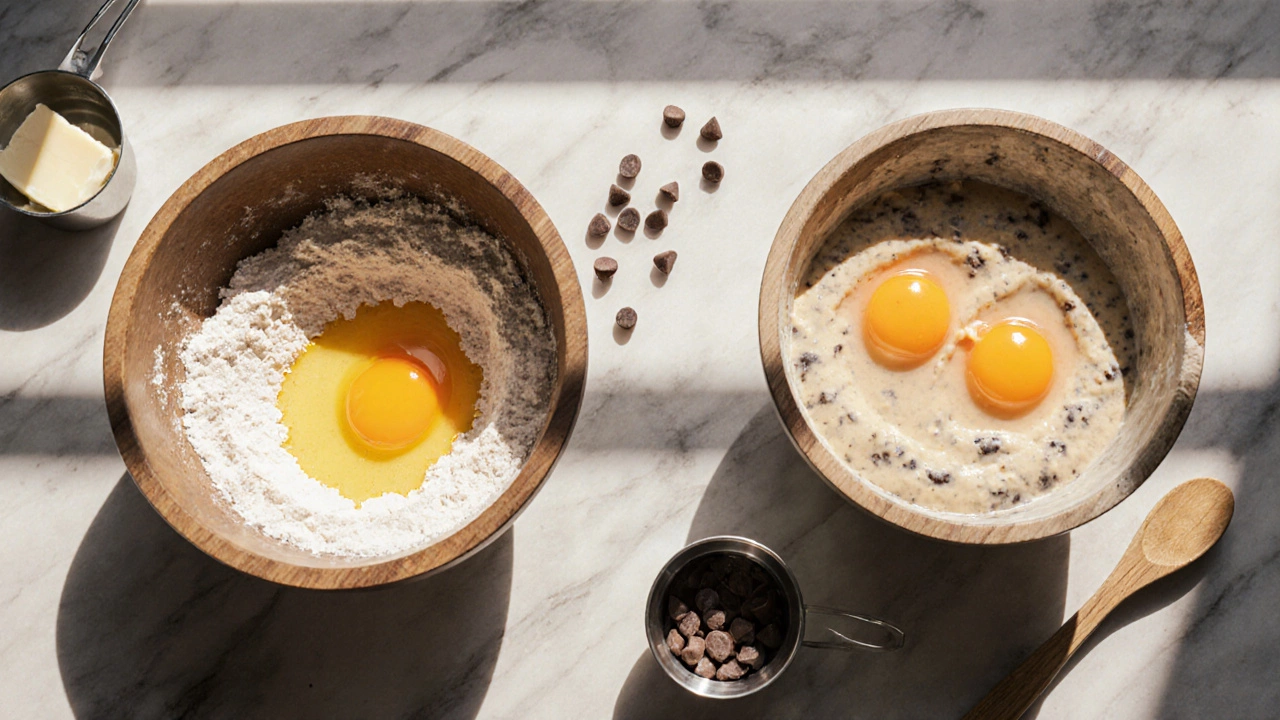How Adding a Second Egg Changes Your Cookies - What to Expect
Discover how adding a second egg changes cookie moisture, spread, texture, and flavor, plus tips to balance or fix over‑egged batches.
When working with Eggs in Baking, the practice of using eggs to add structure, moisture, and leavening to baked goods. Also known as baking with eggs, it shapes everything from fluffy sponge cakes to chewy cookies. A single egg packs both Egg Whites, protein‑rich liquid that can trap air when beaten and Egg Yolks, fat‑laden center that adds richness and emulsifies batter, each playing a distinct role. When you whisk egg whites, the proteins unwind and create a foam that expands in the oven, acting as a natural Leavening Agent, any ingredient that creates gas bubbles to lift batter. Yolks, on the other hand, coat flour particles, hold water, and contribute to browning through the Maillard reaction. Together they balance structure and tenderness, turning a simple mixture of flour, sugar, and butter into a cake that rises, stays moist, and holds its shape after cooling.
Understanding the difference between whites and yolks lets you tweak recipes for any goal. Want a cloud‑light mousse? Fold in stiffly beaten egg whites and you’ll get a airy texture without extra fat. Seeking a rich, custardy crumb? Use more yolks; the added fat slows gluten development, yielding a tender bite. Temperature matters too – room‑temperature eggs whip faster and incorporate more air, while cold eggs can lead to a dense crumb. If you’re out of fresh eggs, substitute with water‑based alternatives for moisture, but remember they won’t provide the same lift or emulsification. Adding a pinch of cream of tartar or a splash of lemon juice stabilizes egg whites, helping them hold volume longer. For gluten‑free bakers, eggs become the primary binder, so choosing the right ratio of whites to yolks can replace the missing structure that wheat normally supplies.
Freshness is another hidden factor: older eggs spread more easily, which can affect how well they trap air. Test freshness by placing an egg in water; it should sink and lie flat. A floating egg indicates too much air inside, which can lead to weak foams and uneven rise. When a recipe calls for whole eggs but you need extra lift, consider adding an extra egg white rather than a whole egg to boost leavening without adding extra fat. Finally, don’t forget the post‑bake impact – eggs contribute to crust color and flavor development, especially in pastries where a golden crust signals a successful bake. Below you’ll find a curated set of articles that dive deeper into each of these aspects, from mastering meringue peaks to troubleshooting flat cakes, giving you actionable steps to harness the power of eggs in all your baking adventures.

Discover how adding a second egg changes cookie moisture, spread, texture, and flavor, plus tips to balance or fix over‑egged batches.